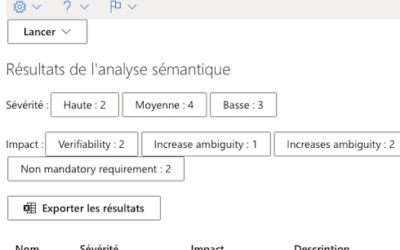With Generative AI, Semios enhances the productivity of technical documentation. Illustration on the theme of traceability, featuring Chloé Cimpello, a linguistic engineer at Semios.ai.
What is the issue surrounding traceability ?
The specifications of a new system are written in phases: an initial phase defines overall requirements, or “parents,” and then a second phase defines detailed requirements or “children,” linked and coherent with the parent requirements.
However, these links are currently created manually in ALM/PLM software, which is a tedious task with the risk of omissions and errors. For example, a car’s sunroof can be revised without updating certain downstream requirements. This can lead to components being developed unnecessarily or a malfunctioning sunroof.
Another scenario could involve a specification for a bolt required for multiple subassemblies. Incorrect traceability could lead to a revision of the bolt for one subassembly without considering its impact on the other subassembly.
What solution does Semios offer ?
The new version of Semios can automatically generate links between a set of parent requirements and a set of child requirements, leveraging ChatGPT or equivalent.
It then identifies orphan requirements.
Finally, it compares the links generated automatically with those declared manually by users.
These features can be provided with a Language Model chosen by the client, particularly an internet-isolated model (such as Llama 2) to ensure the confidentiality of the information used.
What are the benefits for Semios clients ?
First and foremost, it saves a lot of time in creating and verifying links.
Furthermore, it significantly reduces the risks of omissions and errors associated with multiple project revisions, with their operational consequences such as delays and cost overruns.
Finally, this automation minimizes the tedious manual tasks of creating and manually verifying parent/child links in ALM/PLM software.



